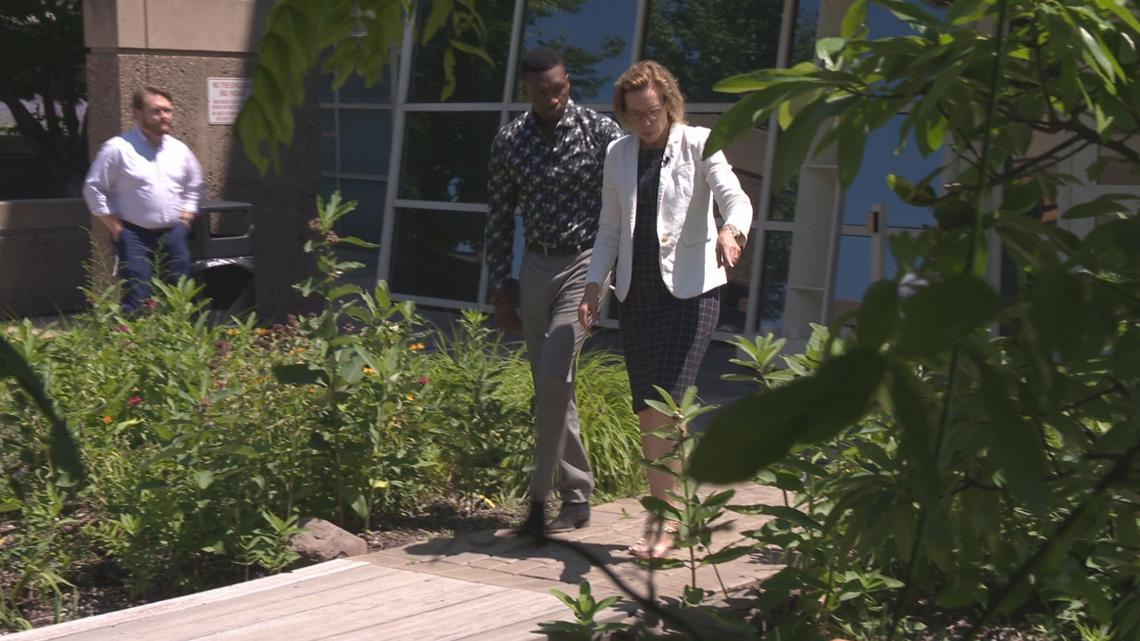CLEVELAND, Ohio — This summer’s rain has many of us checking gutters, downspouts and assessing where it accumulates. According to Kyle Dreyfuss-Wells -- that’s a good thing. The CEO of the Northeast Ohio Regional Sewer District says it's important for all of us to understand where our water goes. We all play a role in preserving this precious commodity.
“What we’re seeing with climate change, wetter, warmer, wilder weather. It’s raining more often. These rainstorms are more intense, and you see more flooding. People have street flooding; you have flooding of basements.”
This change requires an action plan, Dreyfuss-Wells says.
“That’s why we’re focused on restoring floodplains, restoring streams, protecting wetlands, building green infrastructure so that there’s places in the landscape where water can slow down, soak in and then slowly return to rivers and streams.”
What can we do to help our water quality and consumption? This is where that self-inventory trek kicks in.


“For our residents here in Northeast Ohio, when they start taking account of their day-to-day lives, their community, their street, their block, what can they now start doing in terms of helping our water quality I think the best thing to is to walk around your property, and say, ‘where does the water go from my property?’ On the storm water side, look at your gutters. Are they hard piped down into the ground? That means that storm water is leaving your roof and going right into the storm water system. It's not having any opportunity to slow down and soak in. How on my property can I capture my own runoff and give it time to soak into my ground to be captured in a rain barrel or a cistern or a rain garden?”
If you are wondering what a rain garden is, it’s simple. A rain garden is a depressed or sunken area in the landscape that collects rainwater and allows it to soak into the ground. Typically, they’re landscaped with grasses and flowering perennials. Rain gardens are a great way to reduce runoff from your property. They also help keep some of those pollutants, like fertilizers, from running off your property. Another benefit: they provide food and shelter for wildlife like butterflies and songbirds.
Kyle Dreyfuss-Wells also showed off NEORSD’s sustainability garden – something that’s not hard to create in our own greenspaces.
She pointed out how runoff from a canopy was taken into consideration. Rainwater travels down a pipe and through a drain into a rain garden. They also selected pervious pavers. You know them as porous concrete pavers, separated by gaps and often placed over a bed of stones. Water can get between those pavers and is stored underneath the paver surface, where it is then filtered back into the soil.
“So, it’s got storm water features to it. And then it's a wonderful space for people to be able to unwind, eat their lunch, talk to each other, you people do meetings out here. It's just a wonderful, wonderful, um, addition to this, you know, highly urbanized space,” Dreyfuss-Wells said.
See our full interview with Kyle Dreyfuss-Wells below:

